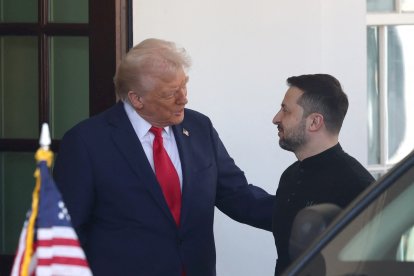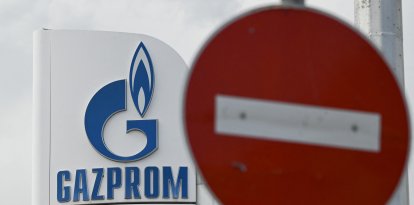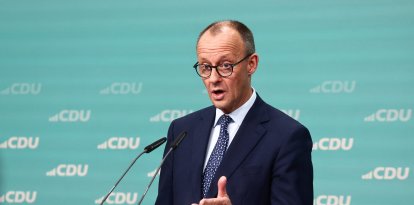Zelensky rejects Trump's peace proposal that involved giving Crimea to Russia
Trump's proposal was communicated to both Ukrainians and Russians last week.

Trump and Zelenski together at the White House.
On Tuesday, Ukraine's President Volodymyr Zelensky rejected a proposal from the administration of U.S. President Donald Trump, which contemplated recognizing Russia's control over Crimea as part of a peace deal proposed last week in Paris. "Ukraine will not legally recognize the occupation of Crimea. There is nothing to talk about in this regard. This goes against our Constitution," Zelensky stated during a press conference.
Similarly, the Ukrainian president questioned what concessions Moscow would make if Ukraine were to completely give up its aspiration to join NATO, and even criticized the proposal put forward by U.S. government officials about giving the White House control over the operations of the Zaporiyia nuclear power plant, located in southern Ukraine and occupied by the Russian Army since the beginning of its invasion in 2022. "The plant will not work without Ukraine and without Ukrainian know-how," Zelensky warned.
"The final offer"
As revealed by Axios in an article published Tuesday, Trump's proposal was communicated to both Ukrainians and Russians last week and included not only recognition of Crimea as part of Russia, but also unofficial recognition of Moscow's control over almost all areas that the Russian military has been occupying since the Kremlin decided to invade Ukrainian soil. According to what was published by the media outlet, the one-page document was described by the Republican leader as "the final offer" to reach a peace deal.
The media outlet also noted that the Trump Administration threatened both Russia and Ukraine to withdraw from negotiations if the two sides did not reach an agreement as soon as possible. Despite the fact that the proposal poses certain concessions for Ukraine, the truth is that the Zelensky considers the peace framework proposed by the U.S. president clearly favorable to Russia's interests. "The proposal says very clearly what tangible benefits Russia gets, but it only vaguely and generally mentions what Ukraine will receive," a source close to the Ukrainian government told Axios.
What's in it for Ukraine?
Under Trump's proposal, Ukraine would get a "robust security guarantee" that would be based on an ad hoc group of several European countries and allied non-European nations. Despite this, Axios explained that the document does not clearly show details on how this peacekeeping operation would work, and also did not explicitly mention U.S. participation in this group.
On the other hand, if it accepts the agreement, Ukraine would get back a part of the Kharkov region, which is currently occupied by Moscow. Similarly, Ukraine would gain unrestricted right of passage on the Dnieper River, which is strategically important as it runs through key frontline areas in the south of the country.
Trump's plan would also provide Ukraine with both compensation and assistance for the reconstruction of the country. However, this part of the agreement does not specify what the source of funding for such resources would be.
Also, the document refers to a mineral agreement between Washington and Kiev, the signing of which, according to Trump, would be scheduled for this Thursday.
What does Russia gain?
According to what the U.S. government put forward in its proposal, Russia would gain several benefits both diplomatic and economic. In addition to the recognition of its control over both Crimea and Lugansk, Zaporiyia, Kherson and Donetsk, the White House would commit to prevent Ukraine from becoming part of NATO. Despite this, the agreement details at this point that it would allow Ukraine to join the European Union.
On the other hand, Trump would lift the sanctions imposed on Russia since 2014 and even establish strengthened economic cooperation with Washington, with special emphasis on the industrial and energy sectors.
RECOMMENDATION




















